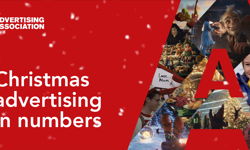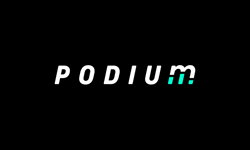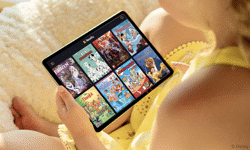Interesting example: Time Inc's new offer of programmatic ad buying in its US print magazines, which it plans to extend to all markets (including, reportedly, the UK). Is Time Inc wise to try to get out in front of what's probably the inevitable next step in media buying? Yes. Will this enable some existing and new, strategically-minded staff to devote more time to devising big-money "partnership" deals? Yes. Will this – and programmatic in general – also result in some layoffs of ad salespeople over time? Logically, you would assume so. But media execs say that the rare salespeople who have tech and marketing savvy plus account relationship skills are in heavy demand.
Then there's the poster child for both change and controversy: you guessed it, native advertising. On that front, the covers of major consumer magazines are an increasing focus of envelope-pushing. There's been no sign that recent transgressors of the Society of Magazine Editors' first guideline – "Don't print ads on covers" – have been so much as wrist-slapped, and these days, top executives position defying such old restraints as a courageous stance.
Anyway, the reality is that we're going to see more and more experimentation with cover ads. Hearst has been the most aggressive to date, last year running about twenty covers, on titles such as Woman's Day, Harper's Bazaar and O, The Oprah Magazine, with formats like flaps with advertising and edit content underneath. Marie Claire ran a Maybelline-sponsored foldout "origami" cover, and Cosmopolitan obscured its May cover with a peel-away paid cover for L'Oreal. While they'll likely regret it if they go that route with Town & Country, if readers of these other magazines are OK with, or "engaged" by this, these kinds of formats strike me as relatively harmless, because they're so obvious. And because they're not on magazines that we expect to cover the Middle East.
On the other hand, I remember thinking that Condé Nast blew it back in 2012, when it attached full-page promotions for Microsoft Windows 8 over the covers of fourteen of its magazines, using a creative concept that not only dragged in the editors' names, but was confusing and misleading. As you've no doubt read, Condé also recently announced the launch of an in-house native advertising agency, and that editorial staff will be involved in writing / producing the advertising - dropping its stance as the last major publisher holdout on the latter.
Still, you’d hope that, at least at more "serious" media that people use to help inform decisions ranging from investing to voting for government leaders, some independent (of advertising) journalists are preserved, as this would seem crucial to investigative reporting. And that if corporations with obvious self interests are allowed to try to position themselves as authoritative and perhaps, by implication, unbiased sources of information – whether inside or on the cover – that clear, conspicuous labelling or differentiation would be the rule. (The ads at the bottom of The New York Times's front page are very clearly ads.)
The tiny paid squibs that Time and Sports Illustrated ran on their covers last May ("For best results, use Verizon", with a page number for native content inside) at least included Verizon's logo. We'll no doubt soon see many more Time Inc cover ads, and whether the approach differs significantly on titles like Time and People.
Unfortunately, Forbes's March 2 issue showed just how easy it is to go astray with cover ads. It ran a box in the upper right-hand corner – right below another box highlighting editorial "Retirement Playbook" articles – reading: "FidelityVoice: Revving Up Your Retirement". This was a "value-added" plug for Fidelity sponsored content featured inside – part of the paid content that Forbes runs in print and online through its (groundbreaking and still controversial) "BrandVoice" native advertising platform.
Dare I note that this cover blurb is not only not labelled as a sponsor plug, but isn't obvious enough to avoid being potentially misleading, or offensive to the intelligence or sensibilities of readers – both of which risk devaluing the perceived credibility and authority of a once-revered business media brand?
Forbes argues that sticking "BrandVoice" or "FidelityVoice" on sponsored content constitutes clear, "transparent" labeling. After all, anyone capable of reading must be up on Forbes-speak, right? Indeed, in his blog, Lewis DVorkin, Forbes Media's chief product officer, explained that the cover plug is part of Forbes's visionary mission to "put content we can monetize in the hands of the right audiences". Journalism "is no longer a linear exercise… what our newsroom is doing is not unlike how a young Egyptologist opened a worm hole [sic] in the sci-fi movie Stargate," he wrote. But of course – another piece of the puzzle falls into place!
DVorkin also explained that achieving such leaps forward often means having to bear the "hollering" of a "deeply rooted professional class" or newsroom "old guard" (translation: the folks once termed "trained journalists"), who have met nearly every form of "media innovation" with "varying degrees of stubbornness". He then equated native advertising with innovations like blogging… and "digital publishing itself".
For the pièce de résistance, he cited a scene in the movie Broadcast News. In the scene, a news producer tells a not-very-bright news anchor that he "totally crossed the line" by having himself filmed shedding fake tears as he interviewed a date-rape victim. To which the anchor replies: "They keep moving the little sucker [meaning "the line"], don’t they?” In DVorkin's interpretation, the producer is troubled by the "new ways" of the "handsome" anchor. By objecting to chicanery in the guise of objective reporting, she reminds DVorkin of the "stiff arms" of those real-life newsroom pros also intent on obstructing progress out of sheer orneriness. Again, I tip my hat for the revelation. You see, since 1987, I had been under the delusion that the brilliant writer / director James L Brooks intended that scene – and the entire movie – as a satire of the then-emerging practice of using compelling but non-news content, and attractive but vacuous anchors, to drive ratings for news shows. In fact, my apparently gravely distorted perception was that Brooks was ironically using humour to try to make people think about the dangers of encouraging dumbed-down media by being seduced by fluff and too lazy to absorb complicated, sometimes unpleasant information.
As I write this, I can't help noting the repercussions of NBC Nightly News anchor Brian Williams' exaggerations about his exposure to combat action, or the uproar in the UK over Peter Oborne's accusing the Telegraph of suppressing coverage of alleged illegalities by HSBC to protect the newspaper's ad revenue. Sigh. With this unenlightened perspective, I fear I won't be opening wormholes anytime soon.












